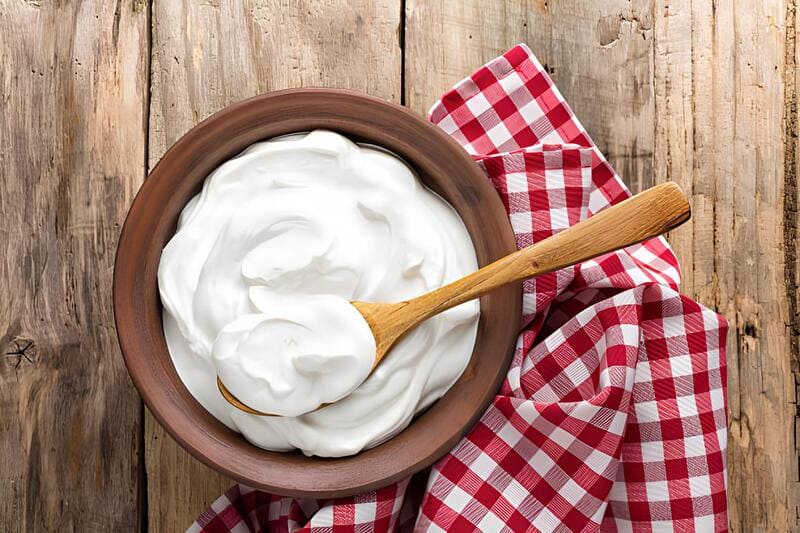
Yogurt, a staple in many Middle Eastern kitchens, transforms into creamy labneh through a simple straining process. Labneh traces back to ancient civilizations, prized for its nutritional benefits and versatility. This Lebanese delicacy, also popular in Egyptian and other Middle Eastern cuisines, offers a tangy, rich flavor that pairs wonderfully with olive oil, herbs, or fresh vegetables.
Considered one of the best and simplest dairy preparations, homemade labneh requires minimal ingredients and effort. This luxurious spread is perfect for quick meal ideas or as a satisfying addition to any mezze platter. Beyond its flavor, Labneh’s probiotic properties make it an excellent choice for a healthy diet.
Ingredients
- 10 liters of whole milk
- 500 grams of plain yogurt
- Salt, to taste
- Olive oil, for serving
Preparation
- Pour the milk into a large pot and heat until it reaches 43°C (110°F), stirring occasionally to ensure even heat distribution.
- Remove the pot from heat and add the yogurt, stirring thoroughly to mix.
- Cover the pot with a large, warm blanket to retain heat, and leave it in a warm place for 8-10 hours, or up to a full day.
- After this period, check the consistency. The mixture should be thickened.
- Lay a clean white blanket or cheesecloth over a sieve placed above a bowl and pour the mixture into it to strain out the excess liquid.
- Add salt to the strained labneh and mix well.
- Cover the setup with a plate and let it drain for 8 hours to a day, ensuring all excess whey is removed.
- Once the labneh has reached the desired consistency, transfer it into sterilized jars.
- Top with olive oil to preserve, ensuring the labneh is fully submerged.
Did you know?
Labneh, also known as strained yogurt cheese, is a culinary gem from the Middle East. This cherished dairy product’s origin lies in ancient times when it was not only enjoyed for its delicious taste but also for its longevity and nutritional value. Traditional preparation involves straining yogurt to remove whey, resulting in a thick, creamy spread.
In Lebanese and Egyptian kitchens, labneh is often served with a generous drizzle of olive oil and sprinkled with za’atar, a spice blend of thyme, sesame seeds, and sumac. This combination elevates the dish, creating a delightful balance of tangy, creamy, and aromatic flavors.
Labneh’s yoghurt base makes it a fantastic source of probiotics, aiding digestion and promoting gut health. Additionally, the straining process reduces lactose content, making labneh more digestible for those with lactose sensitivity. As a quick and easy recipe, labneh offers endless creative ideas for garnishing—from fresh herbs like mint and dill to chopped nuts and honey. Embrace this ancient delight and enjoy the best of homemade Middle Eastern cuisine!
